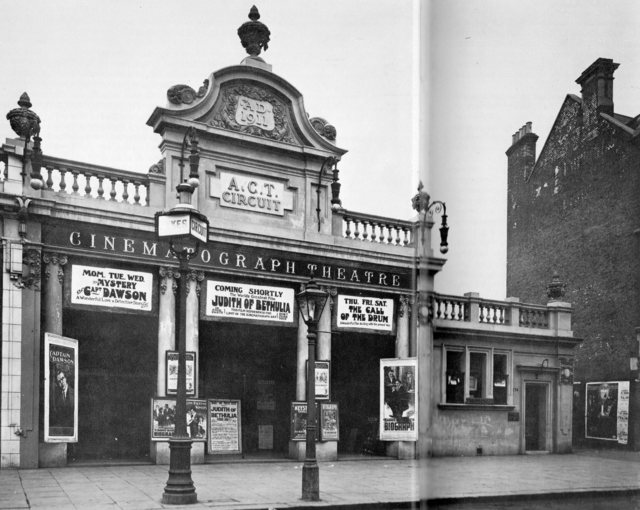The British Board of Film Censors


United Kingdom
The innovation of the cinematograph in the late 19th Century had facilitated the development of picture palaces specifically to screen moving pictures early in the 20th Century. The first British legislation to address such theatres appeared as the Cinematograph Act 1909 (Kuhn, 2016, 13). The Act was to ensure the safety of audiences by employing a licensing system coordinated by County Councils (Cinematograph Act 1909), and what was initially a safeguard against fires broadened as the County Councils determined their own licensing terms. Despite some pushback from the film industry, after the County Councils obtained the right to limit content in the 1910s, the practice of suppressing ‘immoral’ and ‘indecent’ pictures soon became commonplace (Kuhn, 2016, 18). Furthermore, unlike obscenity laws that allowed a court to judge whether ‘obscenity’ had been exhibited after the fact, the licensing laws meant a film could be assessed for content before screening.
The situation of County Councils making individual assessments on film content produced vast non-uniformity in censorship procedures. In 1912, members of industry such as the Cinematograph Exhibitors’ Association, canvassed the British Home Office for an independent agency to take control of the practices of local censorship (Kuhn, 2016, 22; Petley & Kermode, 1998, 140). The British Board of Film Censors (BBFC) were established in 1913 and their operations included passing films for commerical exhition as well as granting certificates; they could determine whether a film was ‘U’ for universal exhibition and particularly suitable for children’s matinées, or ‘A’, signalling content suitable for public exhibition for adults over 16. This addressed complaints made by licensing authorities that some film content was inappropriate for children (Kuhn, 2016, 22). However, the BBFC only acted in an advisory capacity to the County Councils who retained the final censorship decision (Kuhn, 2016, 25; Petley & Kermode, 1998, 14).
Formerly a censor of dramatic plays, G. A. Redford was appointed as the first President of the censorship authority and developed much of the regulation from this format (March Hunnings, 1967, 127). Initially, censorship guidelines concerned depictions of sexual situations, any ridicule of religion or personifications of Christ, gruesome or cruel depictions, medical operations, drunkenness, ‘indecorous subtitles’, ‘indecent dancing’, ‘impropriety in conduct and dress’, forms of propaganda and ‘white slave traffic’, matters pertaining to war, and more (BBFC, 1913). By 1914, between forty and fifty county councils had endorsed the BBFC’s guidelines and made Board endorsement a rule for exhibitors in their jurisdictions (BBFC, 1914). However, the popularity of and different investments in propaganda films from industry and civil society organisations fueled conflict over suitable viewing for audiences between County Councils, the film industry, and the BBFC which became under threat of Home Office involvement. This is captured in detail by Annette Kuhn’s (1988) Cinema, Censorship and Sexuality 1909-1925.
In 1921, in the face of pressure for tighter censorship legislation and ongoing legal action between county councils and exhibitors, London County Council (LCC) made a decision that proved significant to the BBFC’s classification processes, and the reputability of the classification system. They adopted new censorship procedures that cinema proprietors must utilize the ‘U’ or ‘A’ categories which were to be displayed on the cinema screen before a film’s exhibition. After letting initial outrage of exhibitors die down, in 1923 the British Home Office suggested these be the model conditions for all County Councils. When contested a year later, the Lambeth Police Court found the LCC to be acting within reasonable bounds (Kuhn, 2016, 26-7). Although initiated by industry, the BBFC continues to be an independent Board answerable to Parliament and to the public, although the ‘C’ now stands for classification (BBFC, 2020). – Rachel Cole
Further reading:
BBFC Annual Reports. Historical reports available at the BBFC website: https://bbfc.co.uk/case-studies/archive-bbfc-annual-reports
Book. Kuhn, A. (2016) Cinema, Censorship and Sexuality 1909-1925, London: Routledge.
Book. March Hunnings, N. (1967) Film censors and the law, London: George Allen & Unwin.
Magazine article. Petley, J. & M. Kermode (1998) ‘The censor and the state’, Sight and Sound, 1 May, Vol. 8, (5), pp. 14-18.
U.K. Legislation. ‘Cinematograph Act 1909’.
Image from cinematreasures.org